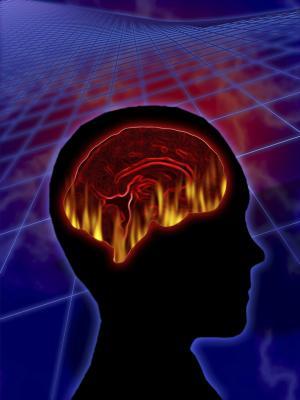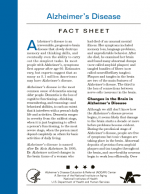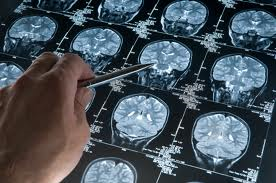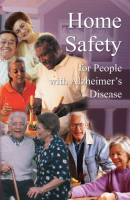Alzheimer’s disease is the ninth-leading cause of death in people older than 65. It initially involves the parts of the brain that control thought, memory and language. The cause is unknown and there is no cure. An estimated 4 million Americans suffer from Alzheimer’s, according to PDR Health, and this number is expected to increase rapidly as the U.S. population ages.

Photo Credit Ablestock.com/AbleStock.com/Getty Images
Symptoms of Alzheimer’s Disease
Alzheimer’s disease, or AD, is a slowly progressive, irreversible brain disease that results in memory loss, impaired thinking ability, and ultimately changes in behavior or personality. The symptoms of the disease progress over time from mild forgetfulness to severely impaired mental function. These symptoms result from the death of brain cells and the lost connections between them. The course of the disease, including the range of symptoms and the speed at which mental function declines, varies widely from person to person.
Causes of Alzheimer’s Disease
Two features are typical in brains affected by AD. One is amyloid plaques — destructive accumulations of a protein called beta amyloid that form between and around nerve cells in the brain. The other characteristic is intercellular tangles of tau protein. In its normal form, tau protein binds to microtubules, which are long, tubular building blocks that serve as “tracks” for transporting signals in the brain. According to Science News, in patients suffering from AD, tau is abnormally altered and forms intracellular tangles that disrupt communication between brain cells, or neurons, and eventually destroys them.
Tau Protein’s Role in Transmitting Brain Signals
In healthy brain neurons, microtubules pass signals along the axons of neurons. Tau protein strengthens the microtubules. The Journal of Alzheimer’s Disease explains that when tau proteins become defective, they accumulate abnormally into clumps or tangles that disrupt communication between nerve cells. In Alzheimer’s disease, tau protein is changed chemically in a process called phosphorylation. It pairs with other threads of tau and they become entangled, resulting in the disintegration of the microtubules, which causes the collapse of the neuron’s signaling system. This eventually results in the death of the neurons.
Tau as a Diagnostic Biomarker for Alzheimer’s Disease
A definitive diagnosis of AD can only be made when a microscopic examination of the brain in an autopsy detects plaques and tangles. However, Science News reports that researchers at New York University School of Medicine have found that elevated cerebrospinal fluid levels of phosphorylated tau231, or P- tau231 — a damaged tau protein found in patients with AD — may be an early diagnostic biomarker for the disease in healthy adults. The research shows that high levels of P-tau231 are predictive of future memory decline and loss of brain gray matter in the medial temporal lobe, a key memory center.
Drugs for Treating AD Symptoms
The Alzheimer’s Association notes that the prescription medications approved to treat Alzheimer’s symptoms belong to a class of drugs called cholinesterase inhibitors. These drugs are effective in treating symptoms involving memory, thinking, language, judgment and other thought processes that occur in early to moderate stages of the disease. They postpone progression of symptoms for six to 12 months for approximately half the people who take them. Rivastigmine, or Exelon, and galantamine, or Razadyne, are effective in treating mild to moderate symptoms, while donepezil, or Aricept, and memantine, or Namenda, are prescribed to treat both moderate to severe symptoms. They are generally well tolerated, although common side effects may include nausea, vomiting, loss of appetite and increased frequency of bowel movements.

References
- PDR Health: Diseases and Conditions. Alzheimer’s Disease.
- Science News: Forgotten and Lost — When Proteins Shut Down Our Brain.
- Journal of Alzheimer’s Disease: Accumulated Amyloid Beta Peptide and Tau Protein.
- Science News: Damaged Protein as Early Diagnostic Biomarker for Alzheimer’s Disease.
- The Alzheimer’s Association: Medications for Memory Loss.


















